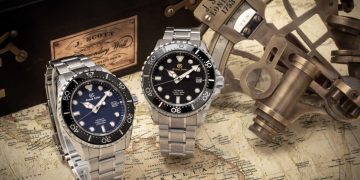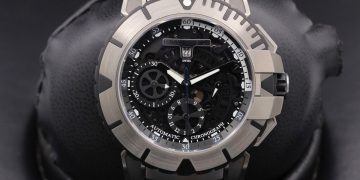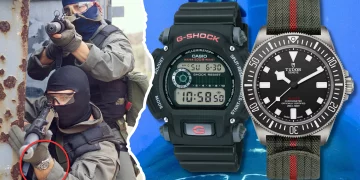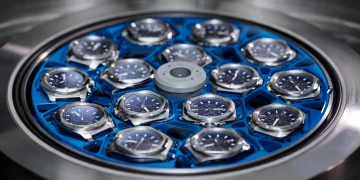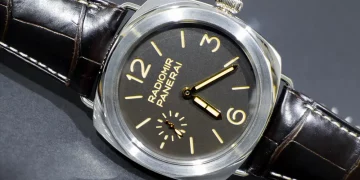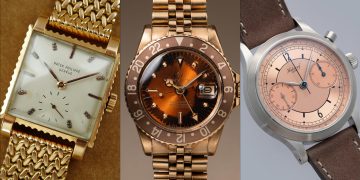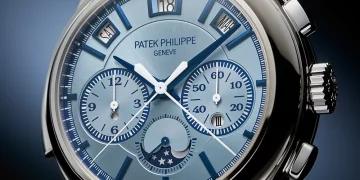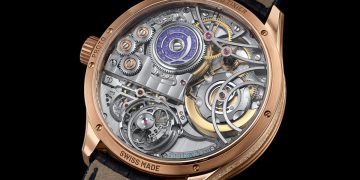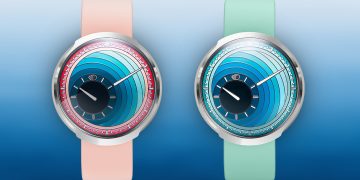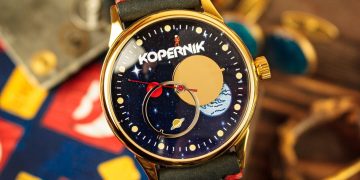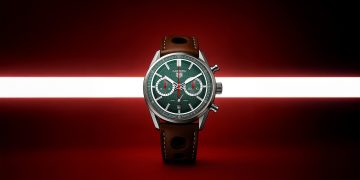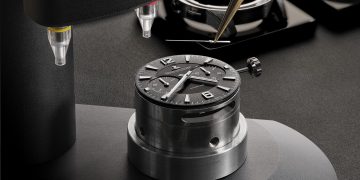The Omega Speedmaster is a watch that has become synonymous with space exploration, particularly with NASA’s Apollo missions. Known as the “Moonwatch,” this timepiece is famously associated with Neil Armstrong, Buzz Aldrin, and the historic moment when humanity first set foot on the lunar surface. But is the Omega Moonwatch really NASA’s first choice for the mission? Did it truly stand out from a competitive field of watches vying for a spot on the Apollo space missions? The story behind NASA’s selection process for the “Moonwatch” is far more complex than most people realize, filled with myths, misunderstandings, and a little-known drama that ultimately shaped Omega’s legacy and marketing strategy.
In this article, we’ll debunk common myths about NASA’s selection process, explore the competing brands that fought for the coveted spot on the Apollo missions, and reveal why Omega ultimately became NASA’s choice. We’ll also discuss how this moment in space history shaped Omega’s marketing strategy, turning the Speedmaster into one of the most iconic and recognizable watches in the world.
The Early Days of NASA’s Space Program: Selecting Equipment for Astronauts
As the U.S. space program gained momentum in the 1960s, NASA was tasked with selecting the best equipment for its astronauts, from suits and helmets to tools and watches. Timing was critical for astronauts who needed precision instruments that could withstand the harsh conditions of space. In the early stages of the space program, watches were not considered as vital equipment for astronauts. However, as missions progressed, it became apparent that a reliable, accurate, and durable timepiece was necessary for ensuring precise timing and synchronization.
NASA began looking for watches that could endure the extreme conditions of space travel, including temperature fluctuations, vibrations, and the lack of gravity. At the time, many watches were simply not built to withstand these challenges. This led NASA to launch a rigorous selection process to find the perfect watch for its astronauts. It was a pivotal moment in the history of space exploration and horology.
The Watch Selection Process: Myths and Realities
One of the most enduring myths surrounding the Omega Moonwatch is the belief that it was NASA’s first and only choice for its astronauts. The truth is much more nuanced. NASA conducted a series of tests on various timepieces before ultimately choosing the Omega Speedmaster as the official watch for the Apollo missions. These tests were grueling and included exposure to extreme conditions that mimicked the realities of space travel. The watches had to endure high levels of radiation, vacuum conditions, extreme temperatures, and other stressful environments.
At the time of the selection, several brands were competing for the coveted spot. Omega, Longines, Rolex, and other prestigious brands submitted their timepieces for NASA’s rigorous testing. Omega’s Speedmaster was not initially considered the obvious choice. While Omega had a reputation for making high-quality timepieces, it was not the only contender in the race. The watches were subjected to a battery of tests, and many were found to be unfit for the task due to their inability to withstand the conditions in space. The tests revealed that Omega’s Speedmaster, despite not being the most expensive or technically advanced watch, was the most reliable and durable for space missions.
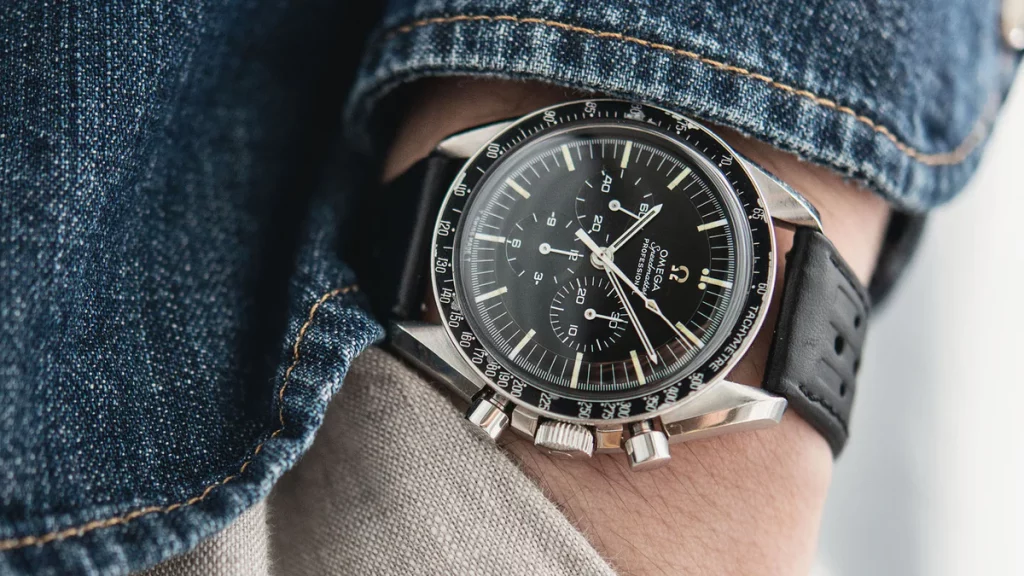
The Competing Brands: Who Were NASA’s Other Contenders?
Before Omega’s Speedmaster was officially chosen, NASA tested several other watches from competing brands. These included well-known Swiss manufacturers like Rolex and Longines, each of which submitted their own chronographs for testing. However, these watches did not fare as well as the Omega Speedmaster.
Rolex: Rolex is perhaps the most well-known luxury watch brand in the world, and its watches have a long history of being associated with precision and durability. Despite this, the Rolex Chronograph was not selected by NASA. One of the primary reasons for its failure in the selection process was its design. The Rolex chronograph was simply not built to withstand the unique conditions of space travel. NASA’s tests showed that the Rolex watch could not meet the standards required for the extreme conditions astronauts would face. Additionally, Rolex had a more traditional approach to watchmaking that prioritized luxury and aesthetics over technical innovation, which may have contributed to its exclusion from the selection process.
Longines: Longines, another prestigious Swiss watch brand, was also in the running for the Apollo mission watch. The Longines chronograph did perform reasonably well during the tests but ultimately did not meet NASA’s rigorous standards for space travel. Longines’ offering, while durable and accurate, did not have the same level of performance as the Omega Speedmaster, particularly when it came to withstanding high levels of radiation and temperature fluctuations. Additionally, Longines did not have the same reputation for producing watches that were explicitly built for professional and military use, unlike Omega, which had been making watches for the U.S. military for years.
The Omega Speedmaster: The Winning Choice
While the competition was fierce, Omega’s Speedmaster emerged as the clear winner in NASA’s selection process. The Speedmaster’s design, while not the most high-tech or cutting-edge for its time, was simple, reliable, and incredibly tough. It was precisely the qualities that NASA needed for its astronauts’ watches. The Omega Speedmaster underwent a series of harsh tests, including exposure to extreme temperatures, vacuum chambers, vibration simulations, and even electromagnetic radiation. It passed all of them with flying colors.
The most critical test came when the Speedmaster was subjected to a simulated space environment in NASA’s “space environment chamber.” The watch was exposed to the vacuum of space and extreme temperatures. It was tested for accuracy and durability under conditions that replicated the harshness of space travel. The Speedmaster proved that it could endure the harsh conditions of space, and it became NASA’s official watch for the Apollo missions, beginning with the Gemini missions in the 1960s.
How the Moonwatch Shaped Omega’s Marketing Strategy
Once the Omega Speedmaster was selected as the official watch for NASA’s astronauts, the brand’s marketing strategy took a dramatic shift. Omega capitalized on the space connection by branding the Speedmaster as the “Moonwatch.” This marketing move tapped into the public’s fascination with space exploration and the Apollo missions, associating the Speedmaster with the most significant technological achievement of the 20th century.
The “Moonwatch” became more than just a timepiece; it became a symbol of human achievement. Omega’s marketing strategy embraced the story of Neil Armstrong’s first steps on the Moon, with the Speedmaster watch firmly attached to the mythos of space exploration. This branding worked in Omega’s favor, and the Speedmaster gained a level of prestige that few watches could match.
Omega’s association with NASA and the Apollo missions cemented the Speedmaster’s place in horological history. The watch became not just a symbol of precision and durability but also a cultural icon. The marketing campaign effectively capitalized on the excitement surrounding the space race, and the Speedmaster’s role in history became a key part of its appeal.
Debunking the Myth: Was Omega Really NASA’s First Choice?
Despite the widespread belief that Omega’s Speedmaster was NASA’s first choice, the truth is more complicated. NASA’s selection process was rigorous and involved numerous tests on various timepieces. Omega’s Speedmaster was not initially the front-runner in the race for space, but it ultimately emerged as the most reliable and durable option. The watch’s design was simple and functional, and it passed NASA’s extreme testing requirements.
Omega’s victory in the race to be the “official watch” of NASA was the result of a combination of factors. It was not the most advanced or the most luxurious watch on the market at the time, but it was the most capable and durable under extreme conditions. The Speedmaster’s success in the selection process highlights how NASA valued functionality and reliability over brand prestige or aesthetics.
The Omega Speedmaster Today: A Legacy of Precision and Innovation
Today, the Omega Speedmaster remains one of the most iconic and recognizable watches in the world. Its connection to NASA and the Apollo missions continues to be a key part of its allure, and it has become synonymous with precision, durability, and space exploration. Omega has continued to innovate and refine the Speedmaster over the years, adding new features and complications while preserving the watch’s original design and legacy.
The Speedmaster’s status as the “Moonwatch” has helped Omega maintain its position as one of the premier luxury watch brands in the world. The watch’s historical significance and cultural cachet have made it a favorite among collectors and enthusiasts alike.
Conclusion: The Untold Drama Behind NASA’s Choice
The Omega Speedmaster’s journey to becoming NASA’s official watch for the Apollo missions is far from a simple story of a single choice. The selection process was complex and involved numerous competitors, including Rolex and Longines, all vying for a spot in history. Omega’s Speedmaster was not NASA’s first choice, but through rigorous testing and sheer durability, it proved to be the best option. The space race drama behind the selection process reveals the true qualities that NASA valued in its astronaut timepieces: reliability, accuracy, and the ability to withstand extreme conditions.
Omega’s association with space exploration has shaped its marketing strategy and helped elevate the Speedmaster to legendary status. The Moonwatch is more than just a timepiece; it’s a symbol of human achievement, and its connection to NASA’s historic missions ensures that its legacy will continue for generations to come.


